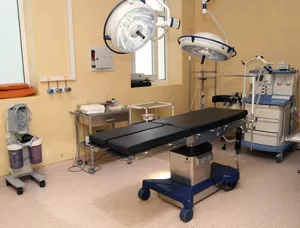Adhesives Meet Challenging Material Requirements in Medical Device Manufacturing Applications
Use of advanced materials will be more prevalent as specifications become more rigorous. Light weighting, processing improvements, new technology and environmental concerns will play a key role in the search for cost effective design solutions. Careful consideration to healthcare trends including aging populations, preventive care, increase in infectious diseases and minimally invasive surgery are of major importance for the future.
Evaluation of adhesives for different material combinations is of prime significance to ensure reliability. An analysis of tradeoffs in performance properties, expenses, curing techniques, surface preparation and dispensing are crucial in medical device assembly. Additionally materials selected for joining need to offer a wide range of mechanical, thermal, electrical, sterilization and biocompatible capabilities to meet the needs of engineers.

From metals to rubbers to ceramics/glass to plastics design professionals have a multitude of options at their disposal. Each material offers its own unique set of advantages. While metals are noted for steam and sterilization/chemical resistance and high strength, ceramics/glass feature outstanding stiffness, wear resistance, dimensional stability and biocompatibility. Rubbers are distinguished for having flexibility, resilience, toughness and low temperature properties. Plastics, widely employed in disposable medical devices have shown amazing growth. Its advantages include:
- Can be produced in high volumes
- Easy processing methods
- Economical
- Available in wide range of dimensions and colors
- Light weight
- Water resistant
- Can be metalized
- Ability to withstand sterilization
- Biocompatibility
- Non-allergenic
- Reduce manufacturing costs
Specific one and two component adhesive systems have been developed to bond similar and dissimilar materials in medical device manufacturing operations. They range from UV/LED curing systems to epoxies to silicones to cyanoacrylates. New innovative products are being developed to meet the unmet needs of manufacturers.
Most Common Used Plastics for Medical Devices
| Acrylics | Polycarbonates | PVC |
| Polysulfones | Polyimides | Polyphenylene sulfide |
| Polyethylene | Polyesters | Polypropylene |
| PEEK | Polyurethanes | Polyamides |
Applications for polyethylenes, polypropylene and PVC include:
| Tubing | Catheters | Connectors |
| Syringes | Housings | Filters |
| Collection bags | IV sets | Face masks |
Polyamides, polycarbonates, polyurethanes, polyamides, acrylics and polyester are frequently used for:
| Blood oxygenators | Catheters | Surgical instruments |
| Balloons | Moving parts | Labware |
| Flow controls | Dental instruments | IV pump housings |
| Glucose meters | Reservoirs |
High performance polysulfones, polyimides, polyphenylene sulfides and PEEK are employed for:
| Filters | Electronic components | Implants |
| Membranes | Valves | Surgical trays |
| High precision parts | Surgical instruments |
